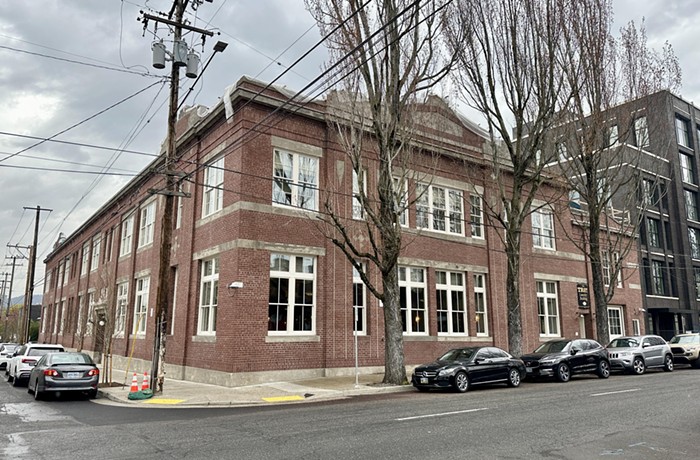
There’s a paragraph in an Oregonian article published last Thursday morning that just doesn’t sit right with me.
The paragraph is from an article suggesting Portland City Commissioner Jo Ann Hardesty was a suspect in a Wednesday hit-and-run in Southeast Portland. The piece quickly gained widespread attention, amplifying allegations which until that point had only been “reported” by reactionary right-wing blogs. (I should note up front that Hardesty was quickly cleared of any wrongdoing and is no longer a suspect.)
Taken line by line, the contents of that initial Oregonian article appear to all be technically true. Hardesty’s name was indeed listed in a Portland Police Bureau (PPB) report about the collision, which was the core fact the Oregonian article was based on.
It later came out that Hardesty was listed as a suspect solely because the victim said the perpetrator looked like Hardesty. Beyond the victim’s words, there was no hard evidence to suggest Hardesty was guilty of this crime—in fact, Hardesty hasn’t driven her car in months because the engine stopped working. PPB cleared her as a suspect on Thursday afternoon, and the Oregonian updated its reporting.
But this first Oregonian article came out before the public, or even the Oregonian itself, had all these details. And if you went off of this paragraph published by Oregon’s paper of record, you could easily be led to believe that there was stronger evidence against Hardesty:
“A driver also gave police a license plate of the car that struck her. Hardesty was listed as the suspect on a computer dispatch report. No injuries were reported.”
Note those first two sentences, placed side by side like that, but with the connection between them so unclear. PPB has a license plate number. Hardesty is listed as a suspect. Does that mean PPB got Hardesty’s license plate number from the driver, which would strongly suggest she was guilty? No, that’s not what it says—but the sentences, placed together like that, come within an inch of implying a cause-and-effect relationship.
Imagine you are quickly skimming this story on your phone in between Zoom meetings or while waiting in the grocery store check-out line, as so many of us read the news, and you get to this paragraph. Do you think it’s possible your brain would make a cause-and-effect relationship, even though it isn’t spelled out there? And what about readers who want a reason to hate a Black woman with power and a healthy skepticism of the police—how do you think they would choose to interpret that paragraph?
It’s not clear how those right-wing blogs or the Oregonian gained access to this information about Hardesty being a potential suspect so soon after the police report was filed. It’s certainly not common procedure for PPB to go around sharing new police reports with media outlets unprompted—at least, not common for us at the Mercury. A public records request for such information typically takes weeks or months to fulfill. At a Thursday press conference, Hardesty said she believes the report was leaked as part of an effort to tarnish her reputation, because she is an outspoken advocate for reducing PPB’s budget and increasing the bureau’s public accountability.
I don’t think the Oregonian’s editorial team wanted to give people the wrong impression when they published this piece, or that they specifically wanted to hurt Hardesty’s reputation. I think they wanted to give their readers the facts about the potential wrongdoing of a public figure, and do so in a timely fashion. And as a reporter myself, I recognize that you can’t hold a news organization responsible for every possible misinterpretation of an article.
But still, it doesn’t feel like enough care for context and clarity can be found in that paragraph. That care also seems to be missing from the entire conceit of the piece, which has since been unceremoniously written-over with an updated version and is now only accessible in archive form. With such scant details available at the time of publication, it’s worth wondering why the Oregonian didn’t simply wait an hour or two for more information to emerge before sending the article into the world, legitimating racist attacks on Hardesty’s character in the process.
I think I know why. Most journalists hold a core belief that information, like an animal locked in a cage, wants and needs to be free. In setting that information free, we journalists tell ourselves, we are doing a public good—an act of altruism, even. That’s double-true for any information that might make powerful public figures squirm, and it’s triple-true for being the first to report such information. It’s a valuable belief, and one that can effectively expose corruption and halt wrongdoing at every level.
But in the race to fulfill the idealistic image we have of ourselves as truth-telling, scoop-getting journalists, we can sometimes skip over equally important, if less intoxicating, factors. That includes weighing the costs and benefits of reporting something that hasn’t quite been fleshed-out yet, and that you know is going to accelerate the hateful, racist projects of people who couldn’t care less about reading between the lines for nuance. It includes putting yourself in the shoes of your audience—and for mainstream newspapers, that ought to include anyone who can read at a middle-school level—and making sure things can’t be easily misinterpreted. And if you do go ahead with publishing the article, it includes being crystal-clear about what info you have and what info you lack, rather than writing in a style so circuitous that a reader doesn’t know which facts connect to others, or in what fashion.
On Friday, Mayor Ted Wheeler called for an independent investigation into how the police report was leaked so quickly, before the police had time to easily clear Hardesty’s name. In a statement, Wheeler called the leak and subsequent breathless reporting “a reflection of broader systemic racism,” and said he was “determined to find out what happened and to prevent it from happening again.”
The police report would’ve gotten out whether or not the Oregonian chose to report on it so quickly—but in amplifying it without question, the newspaper also helped further the goals of systemic racism. If the Oregonian wants to continue enjoying the trust of its readers, it might want to launch an internal investigation of its own, to make sure that doesn’t happen again.


















